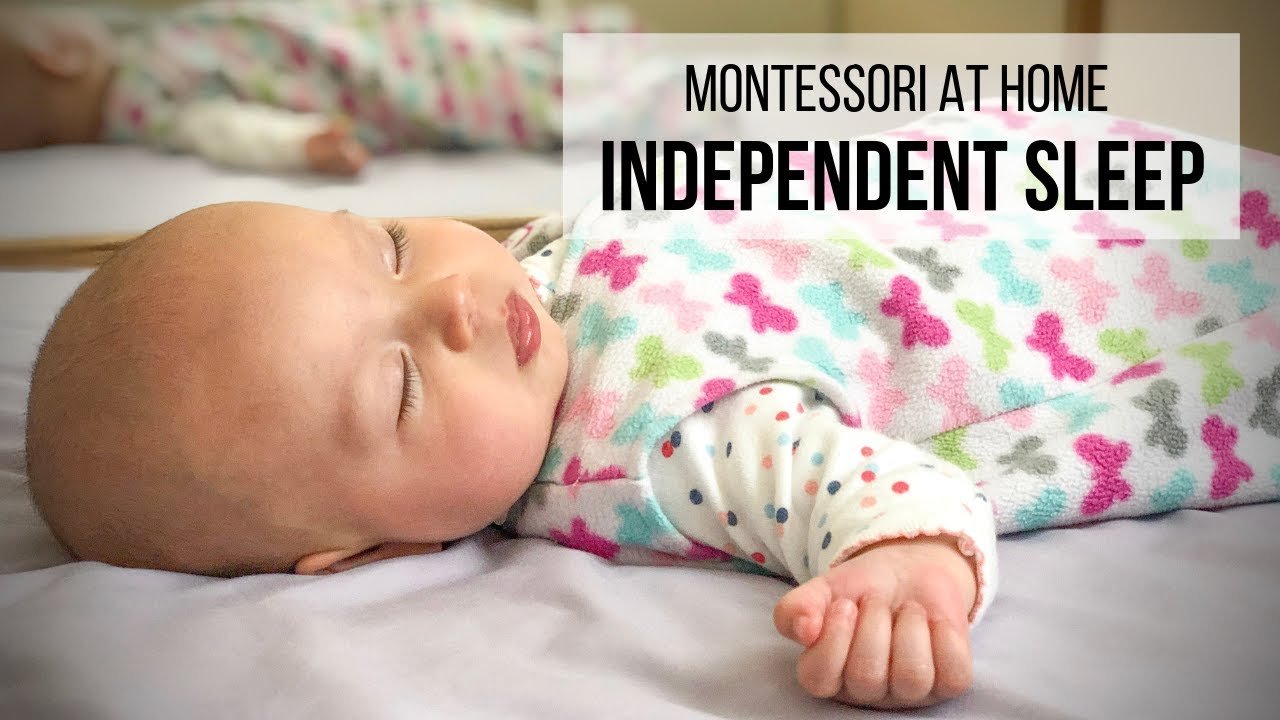Hello there! Have you ever considered implementing Montessori principles in your child’s sleep training routine? In the video by Hapa Family, you’ll find practical ideas on how to encourage independent sleep from a Montessori perspective. Ashley, a mother of two girls, shares her journey in helping her toddler achieve independent sleep. With no sponsorship involved, she offers personal opinions and recommendations for setting up a conducive sleep environment and following an individualized approach based on the child’s temperament and needs.
In a Montessori home, achieving independent sleep for your child requires consistent routines and persistence. Setting up the child’s sleep environment with less stimulation, such as blackout curtains and white noise machines, plays a crucial role in promoting successful sleep. Through various strategies and careful observation of the child’s needs during the sleep training process, you can help your child learn to sleep independently. Remember, there is no one right way to help your child sleep, but Montessori offers a valuable perspective on encouraging independent sleep.

Understanding Montessori Approach to Sleep Training
When it comes to the Montessori approach to sleep training, it revolves around fostering independent sleep for children. This philosophy emphasizes allowing children the freedom to self-soothe and fall asleep on their own. By promoting independence in sleep habits, children can develop healthy sleep patterns and a sense of self-regulation. The Montessori method encourages gradual transitions and personalized strategies based on each child’s unique temperament and needs. The goal is to create a calm and organized sleep environment that supports a child’s ability to sleep well independently.
Creating the Ideal Sleep Environment
The importance of a calm and organized sleep space cannot be understated. A peaceful bedroom that is free from clutter and distractions can significantly impact a child’s ability to fall asleep and stay asleep. Tips for setting up a Montessori-inspired bedroom for sleep training include minimizing stimulation, using blackout curtains, and incorporating white noise machines to enhance sleep quality. By creating a conducive sleep atmosphere, children are more likely to feel comfortable and secure in their sleeping environment.
Implementing Consistent Bedtime Routines
Establishing a predictable routine before bedtime is crucial for promoting independent sleep. Consistency in bedtime rituals helps children prepare both mentally and physically for sleep. By incorporating calming activities such as reading a book or listening to soothing music, children can unwind and relax before bedtime. Consistent bedtime routines signal to the child that it is time to sleep, making the transition into slumber smoother and more natural.
Encouraging Independence in Sleep Habits
Encouraging children to self-soothe and fall asleep on their own is key to fostering independence in sleep habits. Allowing children the opportunity to develop self-regulation skills during sleep can lead to more restful and uninterrupted nights. Tips for promoting self-soothing behaviors include providing comfort objects, establishing a soothing bedtime routine, and creating a safe and secure sleep environment. By empowering children to manage their sleep independently, parents can help them develop essential life skills.
Utilizing Gradual Transition Techniques
Transitioning away from a child’s sleeping area in a gradual manner can aid in achieving independent sleep. By slowly introducing changes to a child’s sleep environment or routine, parents can help children adjust to new sleep patterns without causing disruptions. Gradual transition techniques allow children to become accustomed to changes over time, reducing resistance and promoting successful independent sleep. The benefits of gradual steps in sleep training include less stress and more sustainable progress towards independent sleep habits.
Personalizing Sleep Training Strategies
Considering an individual child’s temperament and needs is essential in devising effective sleep training strategies. Every child is unique, and what works for one child may not work for another. Adapting sleep training techniques based on a child’s characteristics can lead to better outcomes and a more positive sleep experience. By personalizing strategies to meet the specific needs of each child, parents can tailor their approach and address any challenges or concerns that may arise during the sleep training process.
Monitoring and Adjusting During Sleep Training
Observing a child’s behavior and responses during sleep training is crucial for making necessary adjustments to the plan. Parents should pay close attention to how their child reacts to different sleep training techniques and routines. By monitoring their child’s progress and adjusting the sleep training plan as needed, parents can ensure that the approach is effective and supportive of their child’s sleep needs. Flexibility and responsiveness are key components of successful sleep training, as children’s sleep patterns and habits may change over time.
Incorporating Calming Elements in Sleep Environment
Using calming elements in the sleep environment can enhance sleep quality and promote relaxation. Blackout curtains and white noise machines can create a soothing atmosphere that encourages restful sleep. By reducing stimulation in the bedroom, children are less likely to become distracted or overwhelmed at bedtime. Creating a serene and tranquil sleep environment is beneficial for promoting healthy sleep habits and helping children feel secure and comfortable during the night.
Seeking Professional Guidance if Needed
Consulting with sleep specialists or experts in Montessori education can provide valuable insights and support during the sleep training process. Parents who encounter challenges or difficulties in promoting independent sleep for their children may benefit from professional guidance. Knowing when to seek help from experts can ensure that children receive the necessary support and resources to develop healthy sleep habits. Professional advice and guidance can offer additional strategies and perspectives to address specific sleep-related issues effectively.
Conclusion
In conclusion, achieving independent sleep for children requires a consistent and individualized approach. By understanding and implementing Montessori principles in sleep training, parents can empower their children to develop essential independence in sleep habits. Creating an ideal sleep environment, implementing consistent bedtime routines, and encouraging self-soothing behaviors are essential components of a successful sleep training plan. By utilizing gradual transition techniques, personalizing strategies, and monitoring a child’s progress, parents can support their children in establishing healthy and independent sleep patterns. Seeking professional guidance when needed and incorporating calming elements in the sleep environment can further enhance the effectiveness of the sleep training process. Reflecting on the importance of consistency and personalized approaches, parents can help their children achieve independent sleep and enjoy restful nights.

